6 Ways Donkey Konga Out-Rocks Guitar Hero (and 2 Brown Bananas)
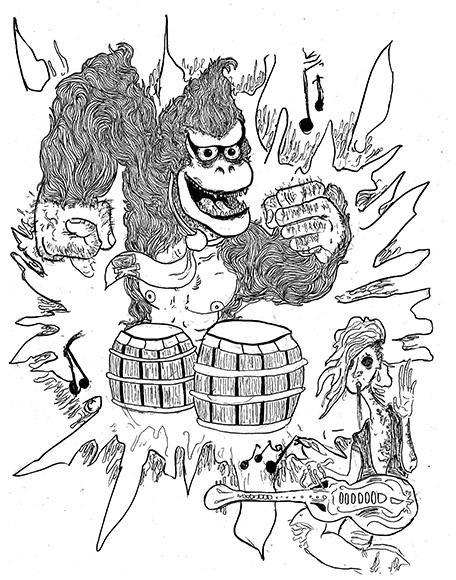 |
| Illustration by Matthew Steele |
If you’ve left behind your rock star lifestyle of debauchery, you may recall when Guitar Hero was a huge phenomenon, followed quickly by the Rock Band Era. Including mobile spin-offs and exclusive titles, Guitar Hero currently has 18 games under its belt, and that number jumps to 24 when you include the DJ Hero and Band Hero series. Rock Band boasts a still-impressive 11 title catalogue, proving the rhythm – based model was not one to be tampered with. Both are undeniably great franchises, and deserve accolades for achieving remarkable sales, acquiring some tricky song licenses, and spreading the gaming community to a new audience. However, if we look back a few years, as we often love to do, we can see our old friend Donkey Kong, clapping his hands on the ground and making that strange hiccupping/laughing noise he makes. It’s as if he’s trying to say, “What about me? WHAT ABOUT ME?!” Poor guy. He asked me to prepare 6 reasons why his band’s poster deserves to be on your ceiling instead of…who is that? Slash? Oh come on….
1. Which Came First: The Banana or the Amp?
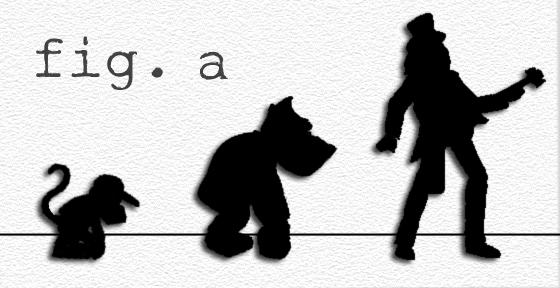 |
| Image by Kai Drachenberg |
Well, let’s be fair and say “neither.” This style of rhythm – based, color – coded scrolling action dates back to games like Dance Dance Revolution and PaRappa the Rapper. Samba de Amigo even had some early motion – capture mechanics with its maraca controllers. Wikipedia cites Simon as the first rhythm video game in 1978. But for the sake of comparison Donkey Konga was released closest to Guitar Hero, and its gameplay is more similar than any of the others, so let’s focus on that.
In North America, the Donkey Konga trilogy was never technically completed. While we did get a spin-off called Jungle Beat (which we’ll come back to shortly) the proper final installment, Donkey Konga 3, never hit our shores. However, all three games predate the first Guitar Hero, with almost a full year in between both franchises’ debuts. We love to say “been there, done that”, and in this case DK wouldn’t be out of line. Donkey Konga deserves credit for taking risks and becoming a successful peripheral seller, regardless of how much it would be overshadowed the following year.
2. This Ain’t Your Daddy’s Mixtape (But It Could Be)
Guitar Hero found a way to capitalize on the desire to be a rock star, a trait found in an incredibly large demographic. Young, old, male or female, the air guitar is a universal symbol. While being a bongo player is pretty cool, let’s be honest: Guitar Hero‘s marketing was vastly superior.
This also meant that Guitar Hero‘s playlists were limited to the rock genre, and more specifically songs that featured a guitar solo of some sort. Donkey Konga focused on groove and feel, and did so with variety. Hip-hop, rock, techno, country, campfire tunes, Latin, orchestral, and remixes of Nintendo favorites comprised the playlists. Every song was picked with percussion in mind, but any great drummer will tell you focusing on the overall sound of the band is a key concept. Sure we got to let loose on some drum solos, but letting out our inner Ringo and being a time keeper that moved the song forward was what made this game special. Mastering a song with this approach was extremely rewarding. By the way, thanks to Hans Drachenberg for helping with all the videos in this list.
3. “I Play Donkey Konga Acoustically”
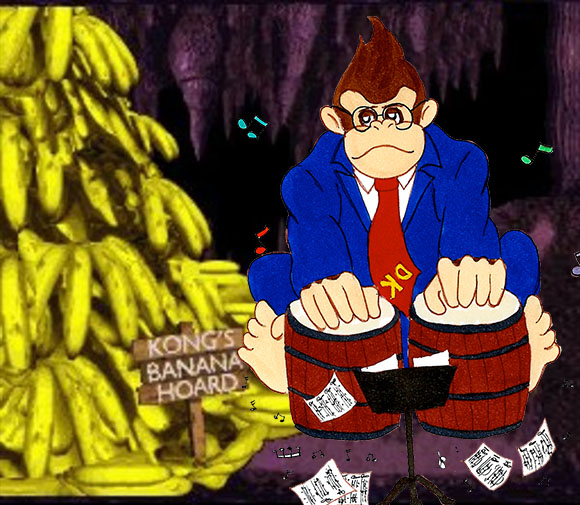 |
| Illustration by Alana Shannon |
This is closely related to entry #2, but allow to me to justify its existence. The ‘Hero Guitar’ had five buttons that simulated fret locations, but nothing to simulate the individual strings. Apart from the strumming motion with the opposite hand, you get the X-axis but the Y-axis is removed. This makes for a brilliantly efficient controller. However, this also means that you are basically playing a heavily modified keytar. The chances of the player taking away some lasting musical knowledge is slim at best.
Now I know this isn’t the primary reason people play. It’s a game; the goal is to have fun. But is it so outlandish a fantasy when you’re holding that screeching controller in your hands and, for that split-second, you think, “I could get the hang of this!”? Maybe not. Music is a language, and it only takes a bit of coaxing to learn a word or two. While some people swear they don’t have a musical bone in their body, at least one concept of music could be taught to them by the right person. Especially if they are claiming they can’t learn music while they are playing Guitar Hero. But taking knowledge from Guitar Hero and directly applying it to any instrument is complicated because no instruments are built like that controller.
But look at that bongo controller! It’s built just like…a real set of bongos, which are played using the same movements as a great deal of percussion instruments! Granted, the controller does have a mic that picks up handclaps, but clapping is a perfectly legitimate musical expression. Bottom line: if you can play a song’s rhythm in the game, you are playing the song in real life. Take it to a dining room table, a real set of bongos, or any other surface and you have a platform to show off your newfound sense of groove. Rock Band did an okay job with this on the drumset controller, but I always felt like I was going break the thing, not to mention the abrasive sound of sticks on a hard plastic pad was often distracting. Even after tinkering with Rock Band‘s calibration, I could never replicate Donkey Konga‘s natural flow or the sensation of learning. Plus, a set of two bongos is way less intimidating for a newcomer than sitting behind the whole drumset. It’s like being in a cage, and you’re no monkey.
4. Dance, Monkey, Dance!!!
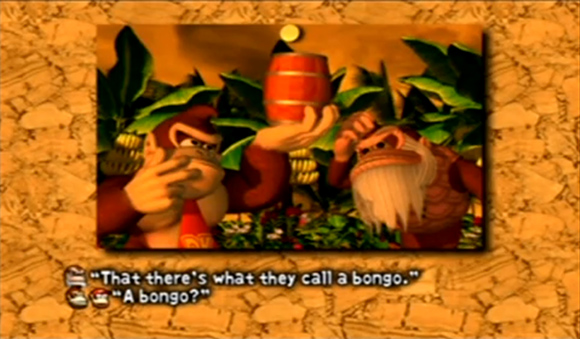 |
An obvious complaint with Nintendo is the constant recycling of their core characters. Mario and Donkey Kong are 33 years old; Link and Samus are 28. As I’m one of the many kids raised on Nintendo, sometimes seeing the familiar faces is still a great way to spark interest. It’s not exactly like being attached to a comic book character, but it’s not hard to make the comparison. Donkey Kong’s face on the box wasn’t why I bought this particular game, but it’s not hard to believe that others did and stumbled across a new learning experience in the process.
Using DK’s universe as the setting for a music game worked in favor of the game’s playful tone. Nintendo’s distinct brand of humor and fun is ever present; from a barebones story to puns for every setting, option or ranking they could throw in. During gameplay, DK and Diddy sit in the corners of the screen, carrying out the player’s commands. Sometimes it feels like they are mocking you, which only adds to the humor. Their involvement was a part of what made learning fun, and you quickly learned accolades like “Top Banana” aren’t just handed out to anyone.
5. Diddy Up, Pardner
Donkey Konga‘s multiplayer mode is a memorable and classic experience. Whether you’re in a band with a partner or going against them, you’re put into an impressively accurate percussion ensemble simulation. When the pieces of music are mapped out across multiple performers, the magic pulse is conjured. This is the same pulse that musicians describe as ‘serving the song’ or being ‘a piece of a bigger picture.’ The movements are simple and straightforward, and when coupled with clever call and response patterns it makes for an immersive communication, the essence of a real drum circle or percussion ensemble. While Guitar Hero is home to some epic guitar duels, Donkey Konga takes the cake for interactive experience. If you have the luxury of learning with an already experienced partner, fear not. You’ll be a silverback in no time.
Thanks again to World 8, and to Max, Mike and Jimmy for drumming with me. This shop is awesome, and you are treated like royalty whether you are a Bowser or a Peach. If you are in the Los Angeles area and have a need for anything video-game related, World 8 is your spot.
6. Beat It, Jungle Beat It
I’ll admit, even as a fan of the DK Bongo controller, I was more than skeptical when Nintendo released Jungle Beat: a platforming game that uses the bongo’s four sensors (right, left, together, and clap) to control DK. But it turned out to be a surprisingly cool experiment, and despite unimpressive sales was pretty well received; IGN praised it with an 8.8/10, and Metacritic gave it an 80%. The level design is as impressive as any of the Gamecube’s other offerings, and the boss battles are engaging. The gameplay is actually pretty easy to get used to, and before long you’re drumming up some impressive combos and aerial feats.
If Rock Band could have come up with a way to make one of their cinematic openings into a playable level, I would have played the hell out of that. But as it stands there wasn’t any other use for Guitar Hero or Rock Band‘s controllers besides their specific gameplay. Unless you wanted to play ‘Stage Crew Hero’ and put them away as fast and efficiently as possible. But Donkey Konga found a way to put their bongos in an exciting new setting. Even the first Donkey Konga featured the ‘Ape Arcade,’ where the bongos were used for simple mini games like climbing on vines and juggling bananas.
Nowadays we have Rayman Legends giving us some wonderfully creative rhythm-based fun in the platform genre. Even though the controls in Jungle Beat are more free form (you’re not tied to a rhythm), I wonder how many of Rayman Legend‘s creators played Jungle Beat for inspiration.
SHHH!! I just noticed Donkey Kong is asleep now that I have finished that list for him. Before he wakes up, let me pull some rotten bananas out of the bunch.
2 Brown Bananas
1. Where Does a 500 Pound Gorilla Keep His Bongos? Anywhere He Wants to Clear Space
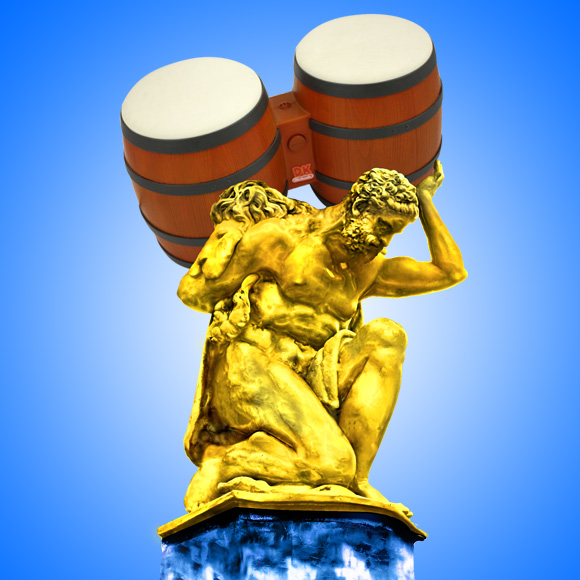 |
| Image by Jeff Fuller |
Though we just noted how great it was that Nintendo found another use for their bongo controller, it still doesn’t solve these problems: Where do you store it? Can your friend play too? How much did that thing cost? Truth be told, in my younger days I was never one to mind packing up my Gamecube to take over to a friend’s house. But I knew it was a hassle, and didn’t blame other enthusiasts who thought I was crazy. For a full band to play is four sets of bongos, which means quite a bit of space. And this snag isn’t limited to portability. Even now, I have the bongos stored awkwardly on top of a bookshelf, because they don’t exactly adorn the room when I’m not playing them.
The odds of other friends catching DK fever and owning their own sets of bongos wasn’t impossible, but admittedtly slim. Sometimes if you really wanted to mamba, this meant buying multiple bongos. Right now on Amazon, a new Gamecube controller is less than 8 bucks. A new set of DK Bongos is upwards of 30 from a private seller, 45 from Amazon itself. They don’t exactly last forever, either; buying used bongos is a little riskier than buying a used standard controller. Aspiring bongo players, especially young ones pretending to be a gorilla, aren’t exactly known for their soft touch.
2. DK DLC: MIA
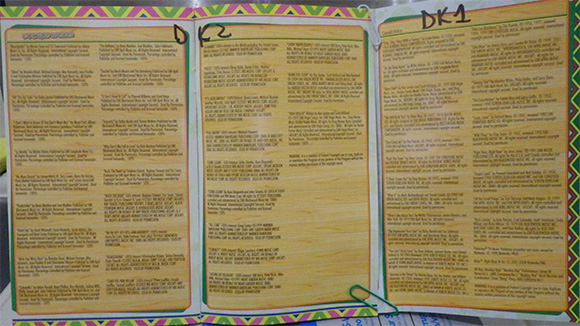 |
| Excluding a few public domain tunes, this is the entirety of both Donkey Konga setlists |
In 2005, Guitar Hero debuted with 47 songs. Two years later Guitar Hero 2 on the Xbox 360 boasted 74 songs, not to mention the inclusion of DLC which brought an additional 24 tracks. After that, the numbers kept climbing. Unfortunately, Donkey Konga only had 33 songs, as did Donkey Konga 2. In other words, totaling the first two entries’ setlists, Guitar Hero outnumbers Donkey Konga 145 to 66. That’s a drag.
The other drag is that America never got to see the final entry in the series, Donkey Konga 3. Not only was the setlist larger, but it heavily featured anime theme songs, including Dragonball Z! There was also an 8-bit mode that unlocked nearly a whole other game’s worth of tracks, in retro glory. That sounds like such a blast, and a fresh yet fitting departure from the previous games.
But no matter how you peel it, Donkey Konga is a fun and engaging experience. If you have the time and money, the investment pays off tenfold. Oh look, DK is awake again. Go get the band back together, buddy. You guys just got a bonus stage.
